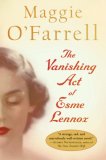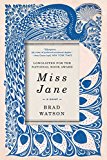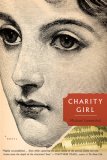BookBrowse Review
BookBrowse
The virtue of this book is its absorbing, suspenseful narration. The reader joins Iris on a kind of detective hunt for her family's true story, and O'Farrell masterfully times the clues to both gratify the hunger for answers and extend the mystery even further. Yet the book's downfall is how thoroughly it sacrifices character development to the rhythms of its engrossing plot. The book dips into the heads of its female protagonists—Iris, Esme, and Esme's sister Kitty—but all three remain stock characters without true interiority. Their thoughts and actions are calculated not to reveal how women in their situation might feel but, rather, to reveal the pieces of the puzzle with deft narrative control. This is a serious flaw in a work that aims to pierce the stereotype of the hysterical woman...continued
Full Review
 (556 words)
(556 words)
(Reviewed by Amy Reading).
Media Reviews
The Guardian - Jane Gardam
The prose is spare, yet the Edwardian world it describes crosses two continents and is rich and clear as stained glass. It moves with ease between the mimosa trees of an Indian childhood and the iron-grey seas of Fife in old age. She can make the economical style seem slow, ruminative and rather old-fashioned ("Let us begin with two girls at a dance"), yet except when the host of minor characters occasionally becomes confusing, the story never flags. And it is a story so historically important that one ceases to think of "style" and "the novel" altogether.
The Independent - Lesley McDowell
This triple-hander between Esme, Kitty and Iris's narratives could have become messy and confusing, but O'Farrell never relinquishes control, and her presentation of Kitty's voice, even more confused and fractured than that of Esme's, is a triumph. ..... It is also an exercise in narrative control that works beautifully, and sees O'Farrell raising her game considerably.
The New Stateman - Christie Hickman
The haunting final pages are among the finest O'Farrell has ever written. This, the most satisfying and least mannered of her novels, marks a significant leap forward both in narrative precision and imaginative skill.
The Telegraph - Amanda Craig
The sinuous intelligence with which we are led between the thoughts of the demented Kitty, the suffering Esme and the courageous Iris offers good, old-fashioned storytelling beneath a seamlessly modernist style. However, it is the unerring note of pure female anguish that makes this one to buy for the women in your life – especially if they are driving you mad.
The Times (London) - Zoë Paxton
O'Farrell's characteristically lyrical writing (sometimes criticised as overblown) is here sparer, more elegant. In one touching scene Esme, sitting in the car with Iris, attempting to process her sudden emergence into the world, pretends to fall asleep because "she needs to think”. Iris reaches over and turns off the radio; this is “the single nicest act that Esme has witnessed in a long time. It almost makes her cry".
Scotland On Sunday - Chitra Ramaswamy
It's powerful stuff. At other points, though, it all gets lost in its own tricksiness as it lurches back and forth from colonial India to 1930s Edinburgh and to the present day, swerving between characters' viewpoints with such speed that it occasionally induces literary motion sickness. To move things along O'Farrell sometimes has to resort to awkward phrases such as "And in her real-time life, she is there again."
The Scotsman - Amy Mathieson
With Esme and Kitty, O'Farrell has a hugely powerful story to tell, but at just under 250 pages the book feels a little too slight to carry such weight. Some of the impact of their story is damaged, too, by the focus on Iris and her less dramatic, less important, family experiences. But, ultimately, it is good to see a first-rate writer attempt something different, and if it doesn't always come off, that's part of the risk you take.
Booklist - Deborah Donovan
A gripping read with superbly crafted scenes that will blaze in the reader's memory long after the novel is returned to the shelf.
Publishers Weekly
Starred Review. O'Farrell maintains a high level of tension throughout, and the conclusion is devastating.
Kirkus Reviews
Despite occasional opacity, this slow-building, impressionistic work amply rewards dedicated readers with a moving human drama.
 Audrey Niffenegger, author of The Time Traveler's Wife
The Vanishing Act of Esme Lennox
Audrey Niffenegger, author of The Time Traveler's Wife
The Vanishing Act of Esme Lennox is strange, sad, and a marvelously well-written novel. I would like to think that families only behave this way in books, but unfortunately betrayal, jealousy, and secrets are all too common in real life. It was a terrific book, I will be thinking about it for a long time.
Reader Reviews
Sharman Horwood
Justice, Strangely I found this book was deeply affecting. The different narrators brought their perspectives in, adding layers to the story that enhanced the tale. Also, while Iris is a very modern woman, Esme is also modern, just placed in a different age that wouldn...
Read More
reading woman
Crimes against women This chilling novel falls in the category of crimes against and by women. Esme Lennox was "vanished" because she did not fit in with what was expected by her culture. Set in the present with the back story coming out bit by bit, the horror ...
Read More
Majorbabs
Memorable, moving story It's always good to be reminded of what today's women have won in terms of freedom, and
The Vanishing Act of Esme Lennox is one of the best choices. The story of Esme, who is released from hiding after many years, is one that will touch you and move ...
Read More
Melissa
What is Madness? Thoroughly enjoyed the mystery. The writing had potential to be very confusing, but Farrell did a great job of tying it all together.
Says much about what behaviors we consider "Mad", maybe they are just abnormal - much like today's prolific ...
Read More
Write your own review!

 (556 words)
(556 words)


